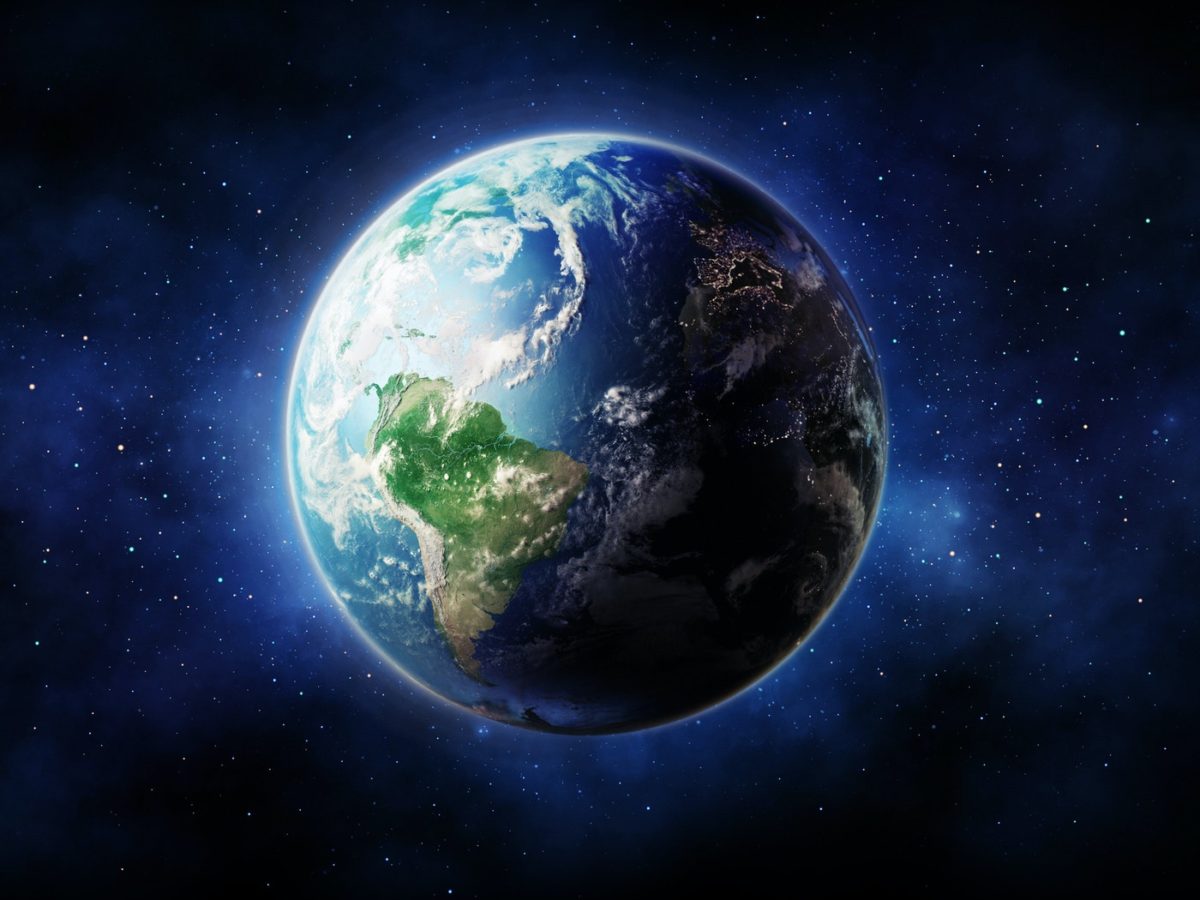by Joe Brewer
A chapter from forthcoming book from Earth Regenerators.
Any well trained doctor will tell you that it is necessary to move beyond the treatment of symptoms to heal what actually causes the suffering within a patient. Root causes of an illness must be identified along with a rigorous understanding for how the involved systems of the body function together if a medical intervention is to work. Similarly, a skilled engineer will say that you have to understand the principles and processes involved in the design of structural solutions if you want their implementation to go according to plan.
We are immersed in a situation that is incredibly complex. Many causes are involved at the same time, operating at a multitude of scales in space and time and interacting in often unpredictable ways. A huge policy discourse has arisen around climate change, for example. But is it a cause of our woes or merely a symptom of something deeper? Is the size of the human population combined with excessive patterns of consumption a pre-determined strain on planetary resources? Or is it merely an unintended consequence of inadequate decision-making when dealing with an interdependent and increasingly globalized economy? Does the exponential pace of technological change create new solutions? Or does it destabilize increasingly outdated systems so that they cannot be managed effectively?
This mental exercise is meant to give us pause. How can we possibly discern what is really going on when so much is beyond our ability to comprehend? Is there a “radical” surgery that gets to the root causes of planetary disruption? How might the root causes be discerned? What kinds of designed intervention might be up to the task of safeguarding humanity’s future?
Further still, when we talk about humanity’s future are we talking about keeping the human population elevated to levels higher than seven billion? Or might we need to think like planetary ecologists and attempt to discern the thresholds associated with carrying capacities that place truly viable human population counts at a much lower number?
All of this has to do with the cultural evolution of humanity and our relationship to the larger environmental contexts in which it has unfolded. I would like to take a few minutes and share the story that has emerged from careful deliberation and debate among anthropologists, evolutionary biologists, archaeologists, paleontologists, along with others in related fields of study that have made it possible to tell the human story in detail.
I will make the case that the current planetary overshoot-and-collapse took roots long ago in human history—even before our own species was birthed into an African savannah three or four hundred thousand years ago. Some might say the global crisis was caused by industrialism and the use of fossil fuels. Others outline the birth of agriculture roughly ten thousand years ago that made it possible to create complex hierarchical societies, some of which evolved into empires and civilizations. I go farther back in time and place the seeds of Earth disruption about three million years ago when our ancient ancestors (who were not anatomically modern humans, yet were still hominids) gained the distinct ability for conceptual metaphor.
These “tool-using” hominids could look at a wedge of rock and see in it a carving utensil. With careful striking motions against another rock, they could chip away at the material pieces that didn’t fit this mental mold until the wedge became manipulable with human hands to cut and slice whatever might be useful to human bodies. This early step in the externalization of a bodily function—in this case, using a carved rock to serve functions previously restricted to fingernails and teeth—enabled these Homo Habilis tool-users to scavenge food scraps more effectively and digest more nutritious calories with their enhanced implements of mastication.
When this occurred, something profound happened that is of a thermodynamic nature. The capacity to take energy and materials from the environment efficiently allowed more of it to be converted into the biomass of hominid bodies. A thermodynamic exchange took place that brought more of the external world into the creation of hominid livelihoods. According to the 2nd Law of Thermodynamics, which states that the entropy within a system can never go down during an exchange of energy, this had the effect that complexity in the environment was reduced so that complexity of human populations (measured in population numbers and biological organization) went up.
This process of simplifying environments to increase hominid biomass took another evolutionary leap about a million years later when other ancestors of ours gained the ability to control the use of fire. This irreversibly altered the course of human history because the emergence of cooking abilities took evolutionary selection pressure off one of the biggest energy drains of mammalian bodies—digestion—and therefore allowed the “energy gains” to gradually accumulate in the body’s other great energy hog, the brain.
Think about it this way. The two systems of bodies like ours that demand the greatest amount of energy are brains and intestines. Stand a gorilla next to a human today and you will notice some similarities in bone structure, shape of the hands, appearance of the eyes, and so forth. You will also notice that gorillas have a proportionally much larger gut than we do. This is because their intestinal tract is 40% longer when scaled for comparison with human bodies. Gorillas need a lot more guts to safely digest their food than we do.
The invention of fire was a cultural practice that fundamentally altered hominid social behaviors, as we will explore in more depth later in this story. It also relaxed the need to slowly digest foods in a tropical environment where parasites are commonplace. Cooked meat is already pre-digested and cleansed of dangerous bacteria, worms, and other microorganisms so that the digestive system doesn’t have to do as much work to get the energy and nutrients out of it.
These energy savings in the gut had the effect of relaxing selection pressure on the accumulation of energy-intensive nerve cells in the brain. This opened up the evolutionary pathway that built up into increasingly complex structures in the brains of hominid descendants. At the same time, just like with the cutting tools of their ancestors, the controlled use of fire could burn through the complex structures of a landscape and convert more of it into charred remains to convert into human bodies through consumption and digestion. Again, there was a pattern of reducing the complexity of the outside world to increase the complexity of hominid populations.
In those days, there weren’t enough hominids around to keep ecology at bay. The reductions in environmental complexity had the effect of accelerating ecological succession—the developmental pattern of sequential stages for ecosystems—in some contexts and so it didn’t have cumulative long-term effects. As we will see below, this changed dramatically when human population began to grow exponentially with the discovery and use of fossil fuels. From this later point onward, ecosystems became overwhelmed with the pace, scale, and intensity of environmental degradation wrought by human cultural practices.
This pattern of structural transformation is the basis of the planetary crisis we are living through today. The story continues at an accelerating pace—by recognizing that the increasing brain sizes of hominid descendants that accompanied the simplification of landscapes through controlled burns led to a special kind of “niche construction” that has since achieved what Michael Tomasello calls a ratchet effect to scaffold the acceleration of cultural evolution in a parallel feedback loop with alterations in biology.
Let me unpack this a little bit.
The use of stone tools for cutting and slicing was a cultural innovation. Yet it enabled the biological evolution of its stone-tool users to take selection pressure away from sharp nails and teeth while increasing the fitness of the species as its population grew steadily (yet very slowly) over the next million years. Then the cultural innovation of cooking arose and took evolutionary pressure away from the biology of large intestinal tracts, making it possible for the increased energy and nutrient efficiencies that are required to grow larger brains.
A niche is an environmental structure that can be functionally used by an organism to increase its fitness. In some cases, like with birds that establish a nest, the niche may be used by one generation but must be rebuilt in future generations. Yet in other cases, like that of a beaver that builds its dam in such a way that river flows are persistently altered, the niche may be inherited by future generations that didn’t have to create it themselves.
For humans, we live today in elaborate built environments that slowly (and sometimes quickly) accumulated an increasing diversity of inheritable niches that none of us needed to build in our lifetimes. New Yorkers can take the subway designed and structured into their urban landscape by ancestors several generations back with a regimen of maintenance and gradual improvements that are manageable within existing constraints. This capacity to create niches and inherit them as built structures has a long history in our species as well. Among the many cultural innovations that were enabled by larger brains among hominids who increasingly organized themselves around cooking fires was the accumulation of conceptual language capacities that dramatically increased their aptitudes for communication and coordinated action.
Cooperation in the form of hunting parties, guided learning with instruction, passing along of previously vetted information, and other highly valuable expressions arose within the “social niches” of shared language groups. Those who learned the gestures, movements, and symbols of a given culture could inherit powerful capacities to further alter environments in ways that served the survival of hominid lines. This scaffolding of cultural development enabled cultures to grow increasingly elaborate and the alteration of environments to serve human needs grew with it.
From here the story becomes more convoluted—partly because it began to speed up and thus had more twists and turns, and partly because the ability to form social niches gave rise to a splendid diversity of human cultures when anatomically modern Homo Sapiens entered the scene. Jump ahead to 100,000 years ago and you will see the clear evidence for ritual burials, symbolic art, and spiritual worldviews in our ancestral line. Reconstructions of climatic and ecological history reveal a drama of continuous changes as humans entered new environments (like when all the megafauna of Australian and North America disappeared shortly after humans arrived) as well as how human populations contended with rapidly changing environments when climate shifted dramatically (like when a new ice age took hold and forced migration from present-day Europe back into parts of northern Africa).
It wasn’t until the end of the last ice age—when a long-term and stable warm period began that lasted more than 10,000 years, a period known as the Holocene—that complex, densely populated, city-states and agrarian societies began to crop up in the fertile crescent of the Middle East, as well as in Northern Africa, Southeast Asia, and throughout Central America. The rise of empires and civilizations is a sweeping drama of the Holocene period that eventually enabled a planetary-scale economic system to arise in the last 500 years. It is this planetary system that has allowed us to cross numerous planetary boundaries and destabilized the self-regulating processes of the Earth itself.
This part of the story is where the “planetary” in planetary predicament becomes emphatic.
All empires and civilizations throughout the Holocene have undergone diverse expressions of collapse. Some were followed by quick rebounds in slightly altered form while others decimated their landscapes so much that they remain harsh, barren deserts many thousands of years later. Yet it wasn’t until the frontier conquest of America by European monarchies that the globalized system took hold—allowing specific cultural models of extraction to take root in the colonial systems of wealth hoarding they constructed. This was amplified massively when fossil fuels began to be utilized to support the emergence of the Earth’s first globalized human economy with greatly enhanced capacities to reduce the complexity of non-human ecosystems by transforming them into increasingly complex human social systems.
All of the wealth inherent in our globalized economy came at the expense of degraded landscapes so normalized today that most of us privileged enough to fly don’t even look out the window of our fossil-fueled airplanes to introspect down onto the fenced off patches of deforested Earth. These fields of degradation have long since replaced the resilient meshwork of ecosystems that were consumed by extractive human cultures in the last few millennia.
Thus we have the depletion of soils, accelerating loss of non-human species, intensifying destabilization of planetary climate, and all the other environmental ills that define our predicament in the 21st Century. I call this runaway cultural evolution because the ratchet effects of social niche construction and scaffolded cultural development have achieved the breakout of an exponential growth in pace, scale, and complexity for the globalized economy that all of us live within in some form or another today.
Cultural evolution in the hominid line began to differentiate itself from the mechanisms of biological evolution about three million years ago. Increasingly the “dual-inheritance” of culture and biology together enabled a third inheritance system to arise in the altered social and ecological structures of niches that could be built upon from one generation to the next. This enabled the process to become self-amplifying until it achieved exponential take-off and has proven itself to be a force of geological significance as a subset of human cultures gained the ability to alter Earth Systems and destabilize the entire biosphere of our home planet.
Understanding the interdependent functions of this biology-culture-niche feedback system is key to designing for the restoration of systemic health for the Earth. Like the doctor who works to address root causes or the engineer who carefully takes the time to learn the principles and processes involved in their designs, those of us seeking to regenerate the Earth will need to hold this complex dynamic of cultural evolution in mind as we go about our work of restoring vital ecological functions to the landscapes that provide for our livelihoods.
We are in the midst of runaway cultural evolution. It is not the burning of fossil fuels or the spread of consumer marketing (or any of a host of other causes comprising subsets of the overall system) that we need to address. More deeply, we must learn how to mindfully design social niches so that they co-evolve with our inherited biological and cultural heritages to participate in the natural ecological processes of regeneration that Earth’s biosphere already knows how to do much better than we do.
With this in mind, let us continue. There is still more ground to cover and we have a lot of regenerative work that needs to be done.
Support Joe Brewer’s further efforts via Patreon or his organization, Earth Regenerators. Joe is currently based in Colombia with his family, studying large scale regional land and climate regeneration.




